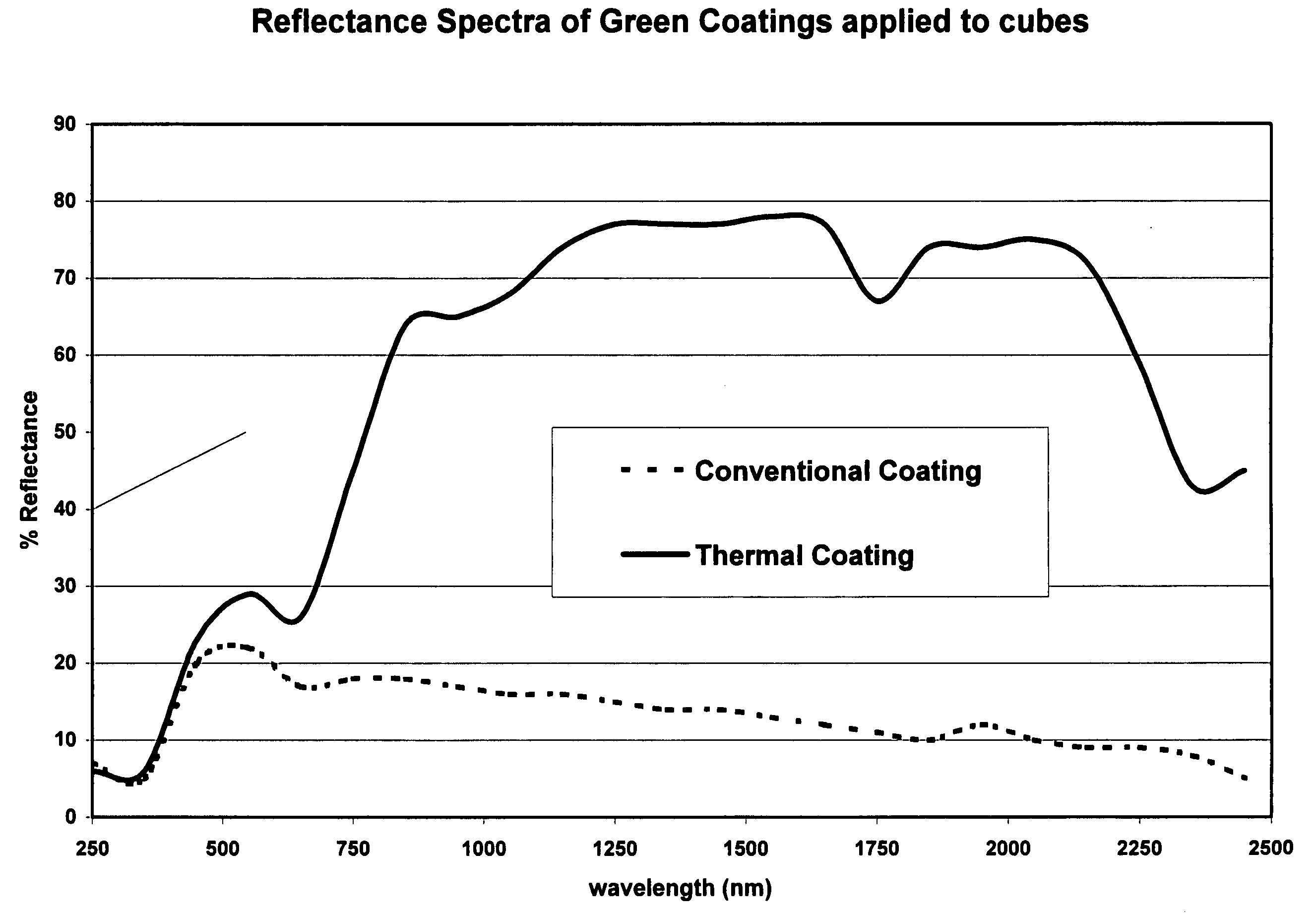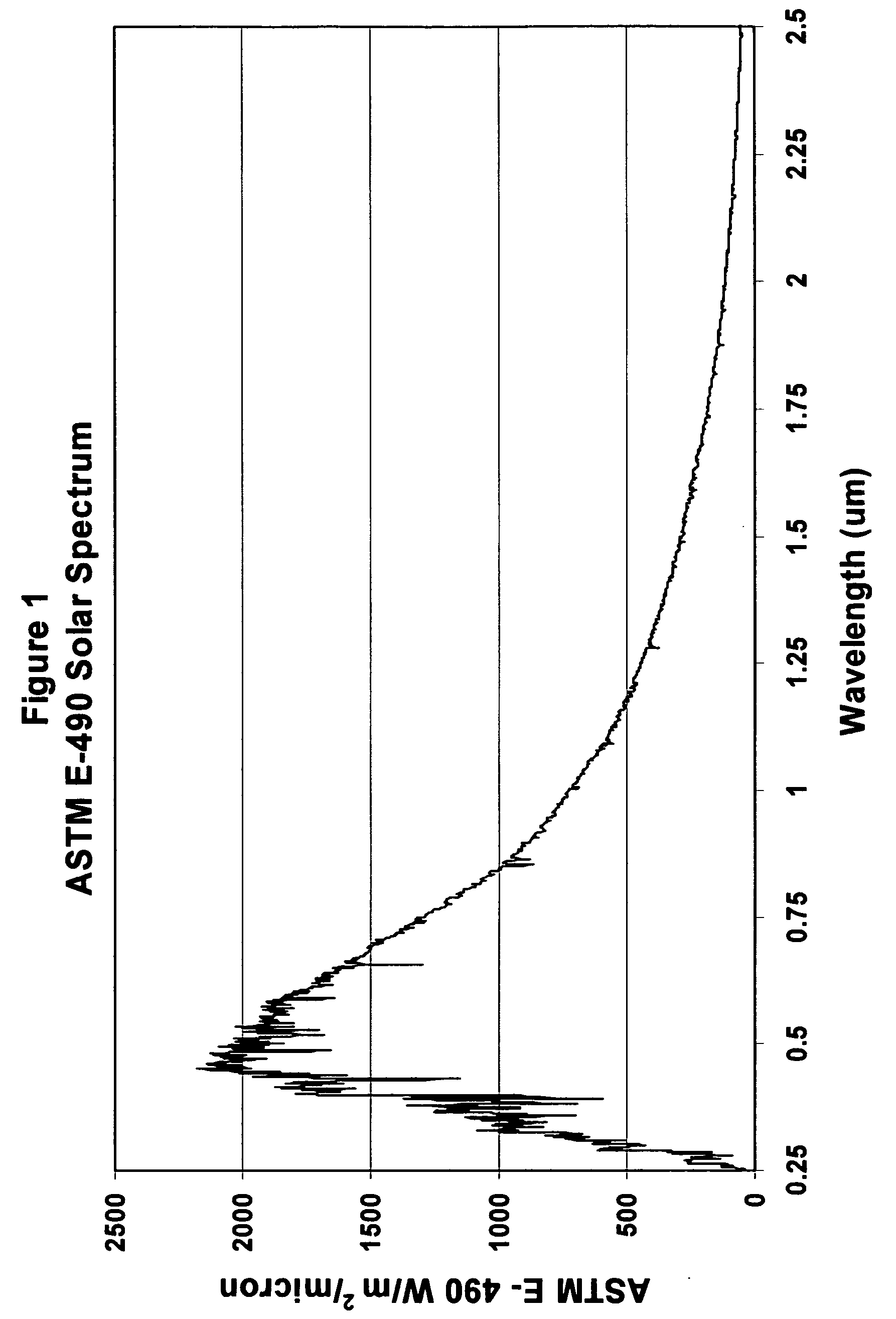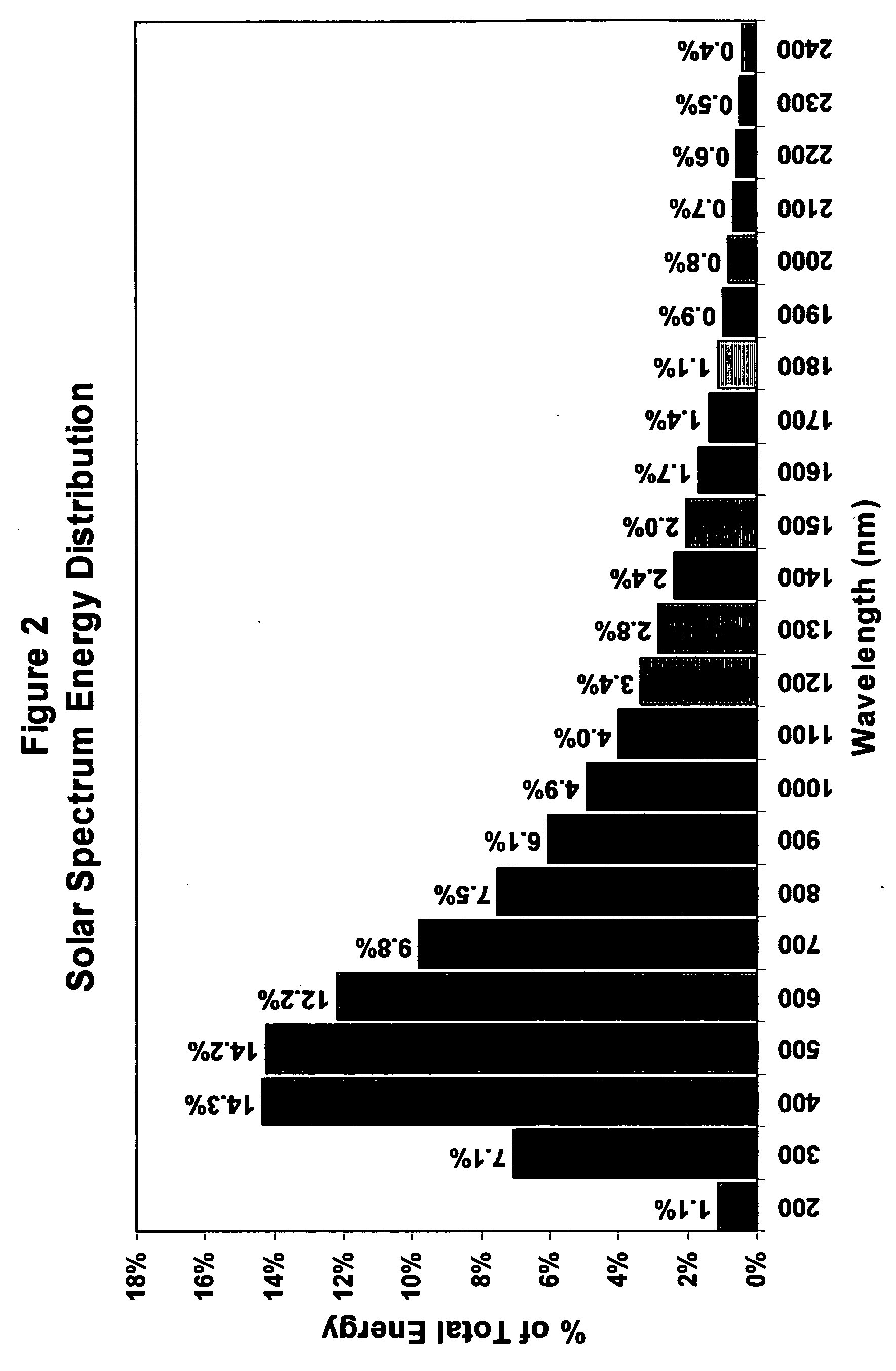Composition of a thermaly insulating coating system
a technology of thermal insulation and coating system, applied in the direction of coatings, ceramic layered products, transportation and packaging, etc., to achieve the effect of reducing thermal conductivity, high infra red reflectivity, and reducing heat transfer
- Summary
- Abstract
- Description
- Claims
- Application Information
AI Technical Summary
Benefits of technology
Problems solved by technology
Method used
Image
Examples
example 1
[0055] A number of extender pigment materials were used to prepare single pigment paints at a Pigment Volume Concentration of 30% (Table 3).
TABLE 330% PVC Single Pigment Formulation for measurementof Thermal PropertiesMaterialWeight (g)% SolidsDry VolumeM-444 Acrylic Resin1405070Defoamer BYK-0180.250Superwet S22 surfactant0.250Busperse 39 dispersant1.850Pigment30 × SG10030Mix under high shear using a Dispermat mixer at 5000 rpm until dispersedSpecificPigment wtManufacturerPigmentGravityper 140 resinUS SilicaSilcosil 1252.6579.5IneosMD101 Fume Silica2.4072.0OmyaOmyacarb 102.6880.4Specialty MineralsMarblewhite #3252.6579.5Mississippi LimeMagnum Gloss PCC2.8585.5ImerysGlomax JDF2.6278.6EngelhardSatintone W2.6278.6ImerysMetaStar2.6278.6ImerysNeoGen 20002.6278.6ImerysNeoGen FTE2.6278.6Buckman LabsBusan 11-M 13.3099.0Sachtleben ChemieBlanc Fixe Micro4.36130.8Sachtleben ChemieLithopone DS4.30129.0KadoxKadox 9155.60168.0HaloxStrontium Zinc3.2497.2PhosphosilicateLuzenacNicron 554 Talc2.858...
example 2
[0058] Single pigment coatings were prepared as described in Table 3. The paint samples were used to prepare a paint draw-down on siliconized release paper using an 8-path precision wet film applicator at 3, 6, 9 and 12 mils (75, 150 and 225 and 300 microns approximately) application thickness. The coatings were allowed to dry for 1 week. Film Thickness was measured using a “Mitutoyo Digimatic” micrometer.
[0059] Thermal conductivity measurements were made using a T-C 1000 Thermal Comparator (Lafayette Instrument Company). The method uses an insulated mass that has fine temperature control using a controlled electrical heating element. For this study the mass was heated to 100±0.1 degrees Celsius while ambient temperature was 25 degrees Celsius. The mass has a conical tip (insert of FIG. 4) that contains a thermocouple for local temperature measurement, all of which is enclosed in an insulated chamber, through which only the tip protrudes. This tip is presented to the test media and...
example 3
[0063] Two “Thermal Coatings” were prepared and color matched to a typical industrial standard for the same application. The two “Thermal Coatings” were based on 1) a reflective pigment system and, 2) a reflective pigment plus an extender pigment having an “infra red reflectivity ratio” greater than 1.0 (NeoGen FTE—Table 6). The paint samples were used to prepare paint draw-downs on Leneta drawdown cards, type 5DX, using an 8-path precision wet film applicator at 3 mils (75 microns) application thickness. The coatings were allowed to dry for 1 week after which reflectance values were determined for wavelengths from 250 nm to 2500 nm at 10 nm intervals, using the black background area of the Leneta card. The reflectance spectra from 250 nm to 2500 nm are shown in FIG. 5 for these two coatings compared to the conventional material of the same color. These spectra demonstrate the complementary role of reflective extender pigment on reflectivity in the infra red region of the solar spec...
PUM
| Property | Measurement | Unit |
|---|---|---|
| particle size | aaaaa | aaaaa |
| temperature | aaaaa | aaaaa |
| wavelengths | aaaaa | aaaaa |
Abstract
Description
Claims
Application Information
 Login to View More
Login to View More - R&D
- Intellectual Property
- Life Sciences
- Materials
- Tech Scout
- Unparalleled Data Quality
- Higher Quality Content
- 60% Fewer Hallucinations
Browse by: Latest US Patents, China's latest patents, Technical Efficacy Thesaurus, Application Domain, Technology Topic, Popular Technical Reports.
© 2025 PatSnap. All rights reserved.Legal|Privacy policy|Modern Slavery Act Transparency Statement|Sitemap|About US| Contact US: help@patsnap.com



